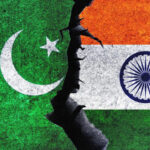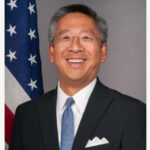In this episode, we discuss some of the broader messages that the Quad meeting sent out and whether the Quad has finally got some teeth on the Indo-Pacific strategy?
This week, the four leaders of the Quad- US President Biden, Japanese PM Kishida, Australian PM Albanese and PM Narendra Modi met in Tokyo for the 2nd time in person for the Quad Summit. In the past year, the Quad has clearly undergone a change, from a largely strategic, theoretical grouping based on ensuring “a Free and Open Indo-Pacific”,to one with a number of specific practical tasks- on Covid, technology, climate change and infrastructure, space and cybersecurity- and we will tell you more about each.
But first, what were the broader messages the Quad sent out:
- 1. Statement of unity: The Quad Summit took place on a day that marked 3 months of the Russian war in Ukraine- and despite deep divisions between India and the other 3 Quad members over Russia’s action and Western sanctions that were reflected in their opening statements, the joint statement issued at the end of the talks had no mention of Russia or Ukraine.
- 2. Importance of the Quad: For US President Biden, his attendance at the Quad signals the US desire to reassure eastern allies that despite its focus on the War in Europe, the US is not going to lose focus on the situation in Asia. The fact that Australian PM Albanese arrived a day after he was sworn in was also a message on the importance of the summit. India continues to emphasize the importance of the Quad, while keeping its balancing act- an SCO meeting of counter terror officials preceded the Quad, and next month PM Modi is expected to take part in a virtual BRICS summit along with Presidents of Russia and China
- 3. China is still the Elephant in the Room at the Quad: Even though China was not mentioned in the Joint Statement, there was the customary reference to opposing coercive and unilateral measures that “seek to change the status quo and increase tensions in the area, dangerous use of coast guard vessels and maritime militia, and efforts to disrupt other countries’ offshore resource exploitation activities.”And then came US President Biden’s remark, that the US would support Taiwan militarily if China invaded.
China’s reaction came quickly- in a statement by the Foreign Ministry spokesperson vowing to fight foreign interferences, and then Chinese and Russian jets, that conducted joint military exercises that flew right up to Japanese airspace, even as the Quad meeting was underway
- 4. And then there was the event that took place before the Quad meeting- the US launch of negotiations for an Indo-Pacific Economic Framework- leaders of 12 countries including India joined the US President at the launch, and will now take part in talks to take the framework forward. The framework itself is not a trade deal, nor will it discuss market access or tariff reductions. However, it is significant that 7 of 10 ASEAN countries and 11 out of 15 of the countries that form the Regional Comprehensive Economic Partnership (RCEP) did take part in the launch. Again, this is more about symbolism than substance, as RCEP is already in place- with China and 14 countries of the Indo-Pacific committed to the free trade agreement that encompasses about 90% of all goods traded in the region. Even so, the IPEF is the US’s way of saying that even though it walked out of the Trans Pacific Partnership CPTPP in 2017, it is back, with a foot in the door with IPEF.
Let’s turn to the Quad meeting itself then and what the leaders agreed upon:
- 1. Strategic:
One of the questions raised about the Quad has been its lack of teeth on Strategic issues. In October 2021, a senior US official visiting India said the Quad was a “non-defence non-military” arrangement. Also in October, the US announced it would cooperate on defence and military issues with Australia and the UK, in AUKUS, which also raised questions about the Quad. At present all Quad countries take part in the Malabar exercises- but it isn’t held under the Quad rubric.
What they did agree on :
– An Indo-Pacific Partnership for Maritime Domain Awareness (IPMDA)- which will collate satellite imagery from Centres in India, Singapore, Vanuatu and the Solomon Islands to offer near-real-time, integrated, and cost-effective maritime mapping- and track dark shipping, piracy and provide disaster relief in the Indian Ocean, South East Asia and Pacific ocean.
– A Quad Cybersecurity Partnership- and even a quad cybersecurity day
– And to coordinate more closely on Space observation programmes and share information gathered
- 2. Infrastructure
– The Quad countries announced they will seek to extend more than 50 billion USD of infrastructure assistance and investment in the Indo-Pacific, over the next five years.
– Development Bank heads including the Head of India’s EXIM bank met in Tokyo to discuss ways of streamlining lending
- 3. Covid and Health
The Quad Covid cooperation plan was launched with much fanfare a year ago… but hasn’t made as much headway as perhaps outlined.
-They agreed to continue to donate vaccines, where about a fifth of what had been out looked, 265 million of 1.2 billion vaccine doses have been distributed thus far
– They agreed to continue a project for 1 billion doses of Johnson and Johnson vaccines at Hyderabad’s Biological E facility- so far there have been none produced as WHO EUL approvals for the production have not yet been received.
– They held a Quad health group meeting on the sidelines of the World Health Assembly meeting in Geneva this week as well.
- 4. Critical Technologies
– Memorandum of Cooperation on 5G Supplier Diversification
– Common Statement of Principles on Critical Technology Supply Chains – for semiconductor supplies
– Cooperation on Open RAN- Radio Access Networks
- 5. Quad People to People:
– Quad Fellowship will bring 100 students from our countries to the United States each year to pursue graduate degrees in STEM fields, and is administered by Schmidt Futures
The Quad leaders also agreed to meet in 2023 in Australia
So, where were the Quad’s misses?
- 1. Quad still doesn’t put its money where its mouth is: At a time when the US’s funding to Ukraine funding in the past 3 months crossed $54 billion- the $50 billion in five years for infrastructure from four countries seems relatively small. Quad fellowships are privately funded, just 25 per country.
The IPEF too- though not a Quad venture makes it clear it is not a trade deal
- 2. Strategic depth is still quite shallow
– No Quad level military to military arrangements- like for eg, SCO does, and yet the rhetoric is increasingly one of countering China in the South China Sea.
– Most of the Ocean data sharing, Space and Cyberwarfare cooperation are essentially coordination arrangements- and don’t actually fund or build new initiatives yet
- 3. On Covid and Vaccines too, there are several unanswered questions.
US funding of a facility that has not yet produced any vaccines for Quad, and Johnson and Johnson, that has been named in the Quad joint statement has not received an indemnity waiver in India, and its US authorisation has been limited.
- 4. India differences on Russia, membership of RIC, BRICS, SCO still stand out
- 5. Even on China, the Quad members have differences- despite various members raising China in their statement, the joint statement doesn’t mention China directly. And even on Taiwan- for example, while all other Quad members appealed for Taiwan to be included as an observer at World Health Assembly this week, India did not.
The truth is, the Quad is still a work in progress, driven mainly by Top-down summits, and much more is needed to give this non-defence non-military arrangement some teeth. India’s contradiction between the Quad in its maritime sphere, and SCO and BRICS on its continental sphere remains unresolved. What seems obvious, as PM Modi has said on many occasions, is the Quad’s intention to be a force for good, and a growing number of areas to cooperate on.





NO COMMENT